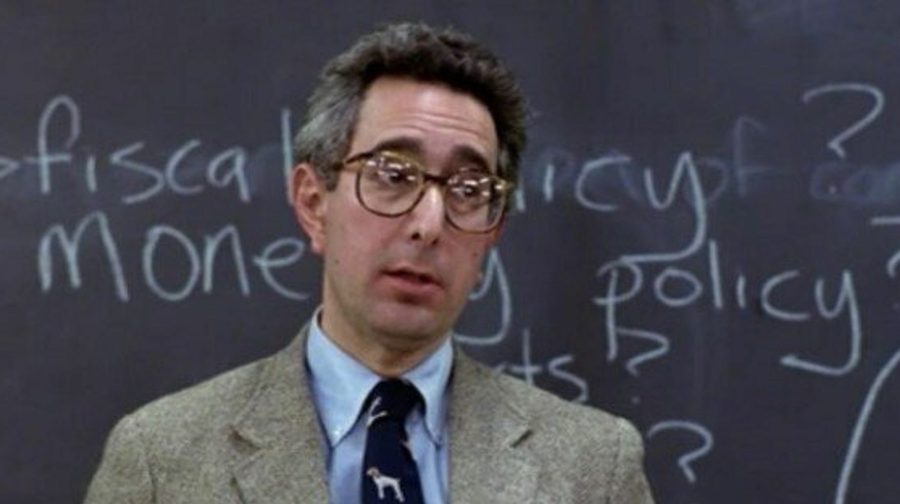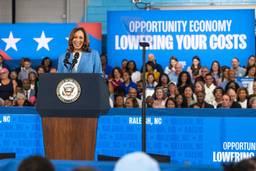The New Inflation Scare Is the Dumbest Thing Since Voodoo Economics
Elites are sounding the alarm over threats of inflation in order to block Biden’s social spending plan. We shouldn’t fall for it.
Max B. Sawicky

After years of hypocrisy and bungled forecasts of doom, the budget deficit no longer provokes panic. The elites need a new bogeyman, otherwise Congress might actually spend us into happiness. Now, the new monster in the closet is Inflation. The great prognosticators Sen. Joe Manchin (D-W.V.) and CNN’s Wolf Blitzer have weighed in, and we are officially advised to be afwaid, vewy afwaid.
Since 2010, median housing rents have gone up by 36 percent. The cost of family health insurance has risen 47 percent. From the academic year 2009-2010 to 2018-2019, average costs of college went up 39 percent. And the median hourly wage rose by just 11 percent, so rent, healthcare and college — among other things — are all less affordable now than they were ten years ago.
To varying degrees, each of these problems is addressed in the Democrats’ budget reconciliation bill, dubbed the Build Back Better (BBB) plan. That legislation includes added support for housing, increased premium subsidies under the Affordable Care Act, and expanded Pell Grants for college students. There is compensation for the inadequate growth of wages, including tax credits for families with children, subsidized childcare, pre-K for three- and four-year olds, and an expanded Earned Income Tax Credit for workers without children. Of course, each of these items is scaled down from what was originally proposed by Joe Biden and Bernie Sanders. More should be done.
Now comes Manchin, leading the charge by calling the budget bill “inflationary.” It’s like criticizing a fire company for using water instead of gasoline. The bad faith here is stunning. There wasn’t a peep about inflation in the case of the bipartisan infrastructure bill, supported by Manchin and signed by Biden on Monday, much less about former President Trump’s tax cuts or defense spending increases.
The spur for this new campaign is a handful of cherry-picked, transitory changes in particular prices. On the most basic level, there is a widespread misunderstanding of what “inflation” really is. Inflation is a continuous increase in prices, more or less across the board. As my reactionary graduate macro economics professor taught me, a spike in the price of, say, oil is not “inflation” unless it ends up feeding into a sustained increase in other prices.
As Ryan Grim notes, according to the Bureau of Labor Statistics, that’s what we are looking at right now. The change in prices is overwhelmingly due to energy. Now, if that spike persisted, it would not be surprising to see it propagate through the wider economy. But there is no reason to expect that. As Dean Baker points out, an isolated bottleneck in the supply of anything is likely to clear in short order, one of the limited blessings of on-demand capitalism. For example, just this year, television prices rose in the summer and subsequently fell by almost three percent.
There has been reporting that oil prices are being propped up by Saudi leader and part-time butcher Crown Prince Mohammed bin Salman, in concert with the Russians. There are two reasons to doubt this. One is that there are other countries not beholden to Saudi Arabia who can offset any manufactured shortfall by ramping up their own production. Members of the OPEC cartel have been known to cheat on mutual agreements to limit supply. Two is that price spikes encourage the adoption of alternative energy sources. It is true that this adoption takes time, but once it is established, it is non-reversible. A temporary price increase can generate a permanent loss of customers.
This narrowness of the price increases is well illustrated in the latest figures for the Consumer Price Index. Including the latest, allegedly alarming, one-month change of 0.9 percent in the total CPI yields a year-over-year (‘YOY’) change (from October of 2020 to last month) of 6.2 percent. It should be noted that this 6.2 figure does not itself provide support to any claim that the increase is either spreading through the economy or is being sustained. On the first count, what is called the “core” CPI, excluding the volatile numbers for food and energy, shows a YOY increase of a more modest 4.6. And the 0.9 percent jump in October constitutes just one month of data, so it is too soon to say it is sustained.
The politics of all this, meanwhile, is a different matter. We are being driven deep into the silly season. The up-to-date price of gasoline, which people buy on a regular basis, is displayed on huge signs all over the country (and on Twitter by pundits like Blitzer). The price of milk is listed in the advertisements we get with the local newspaper. As Kevin Drum demonstrates, the news media thrives on publicizing outliers in prices, not boring averages.
On the other hand, the prices of healthcare or college don’t receive so much public attention. We could be forgiven for suspecting that underlying this disparity is the presumption that the working class doesn’t need healthcare or higher education. Moreover, anyone who follows the news knows that no Republican ever gives a Democrat credit if the price of gas goes down, which it often does. The GOP only cares when prices go up during Democratic presidencies.
Purely for the sake of argument, let’s concede that the recent increase in energy prices is a problem. Even so, contracting or eliminating the BBB bill to reduce the price level, as some “centrists” have advocated, is as absurd as invading Iraq to avenge 9/11. (Do you see a pattern here?) A serious response to an undesirable increase in energy prices would do something about…energy. A broad-brush response, such as a move by the Federal Reserve to raise interest rates, would contract a much wider swath of the economy than the energy sector. And, under that scenario, we might not even see a pale imitation of Biden’s agenda come to fruition.
In the latter regard, inferring an inflation risk from BBB fails the most elementary economics, since, according to the Congressional Budget Office, the current version of BBB is mostly offset with tax increases. It would only be the net of spending over revenues that would potentially be inflationary, if and only if the economy did not still have a shortfall of five million jobs. In reality, the BBB legislation is likely to lessen the inflation risk, not increase it.
You don’t have to be a socialist to discount the inflation danger. In late September, a group of eminent, Nobel Laureate economists announced support for BBB, writing: “Because this agenda invests in long-term economic capacity and will enhance the ability of more Americans to participate productively in the economy, it will ease longer-term inflationary pressures.”
The Federal Reserve itself is saying the recent increase is annoying but transitory, reducing the likelihood (thankfully) that it will take any action to choke off the current growth in employment.
Another group that is paid — handsomely — to anticipate inflationary trends consists of those who trade in the bond market. Since most bonds’ returns are in nominal dollars, a change in the price level changes the value of any such bond. The ‘coupon’ of a bond is a fixed dollar amount. The market will reprice bonds so that they hit the market interest rate. It’s amusing to note that, before and after the latest panic about the October price change, the interest rates on Treasury bonds with durations of seven years or longer all went down, not up.
All things considered, this new inflation scare is one of dumbest turns in what passes for economic thinking since voodoo economics.
Max B. Sawicky is an economist and writer in Virginia, formerly with the Government Accountability Office and the Economic Policy Institute. He is a Senior Research Fellow at the Center for Economic and Policy Research and runs the MaxSpeak, You Listen! blog at sawicky.substack.com.








